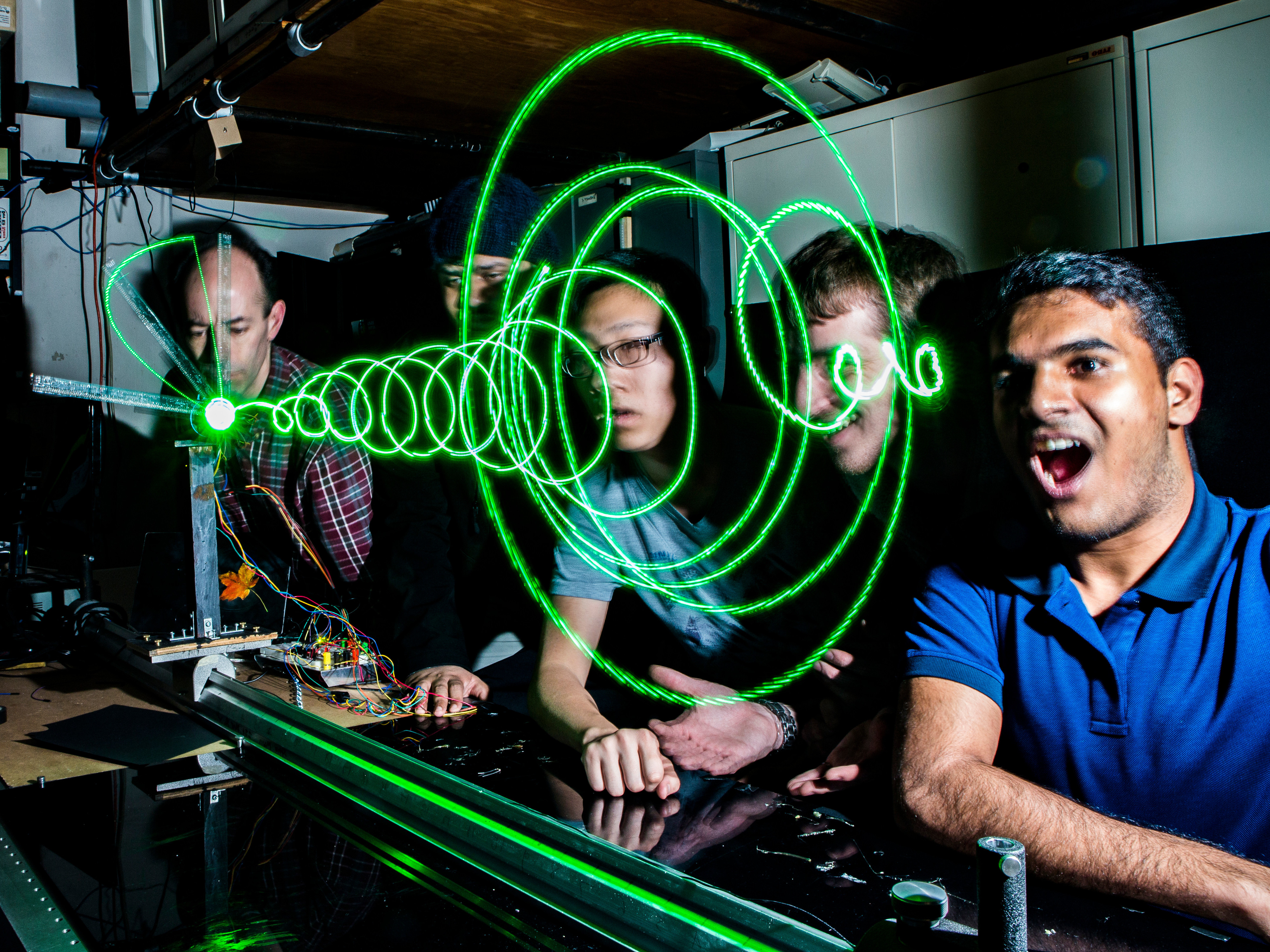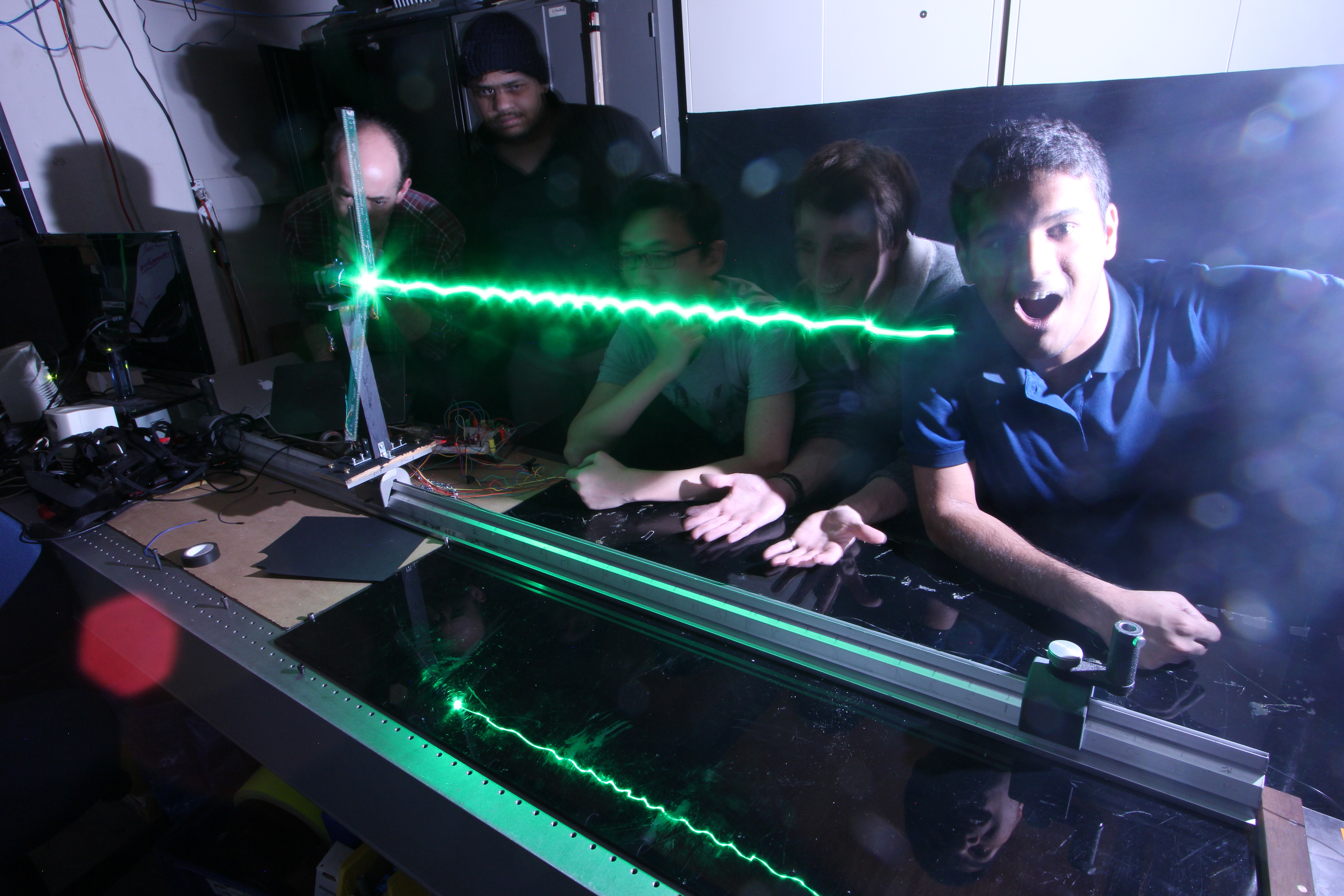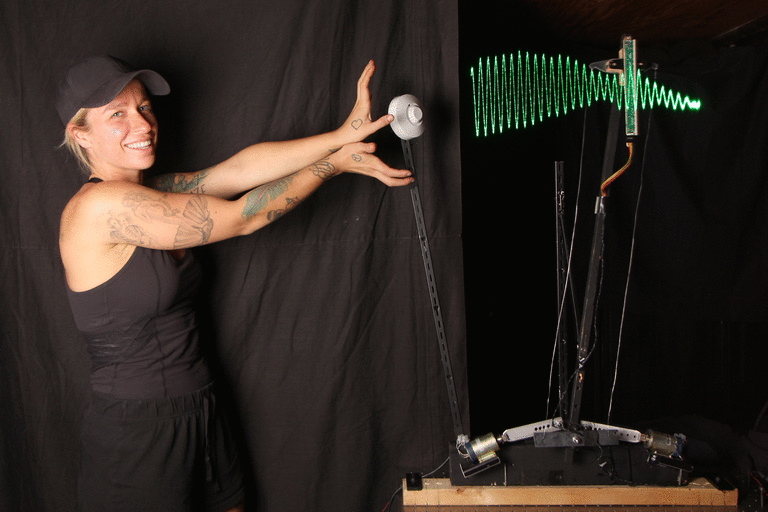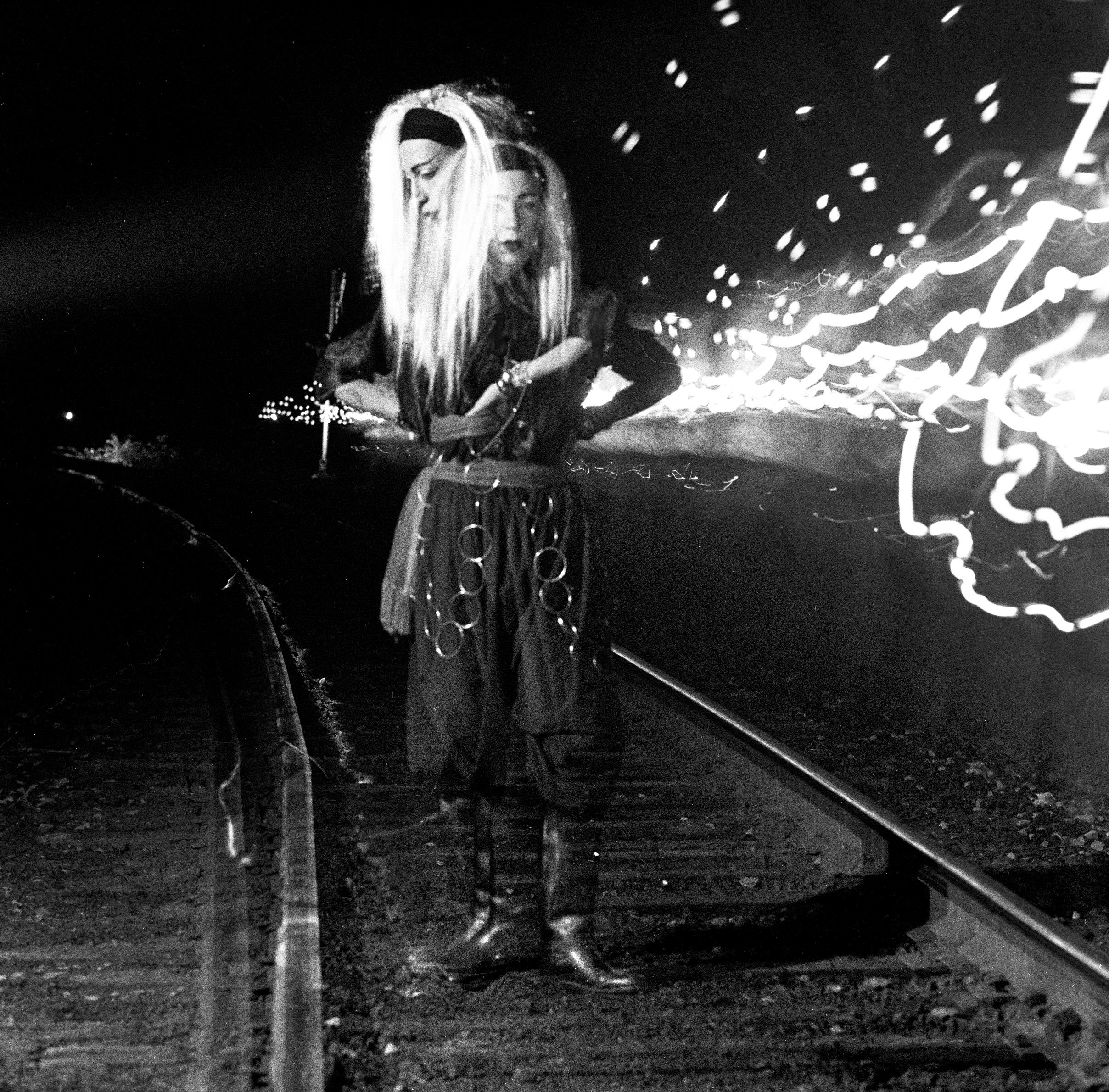
 (Phenomenological AR as a form of visual art -- Impulse Magazine, Vol. 12, Number 2, 1985)
(Phenomenological AR as a form of visual art -- Impulse Magazine, Vol. 12, Number 2, 1985)
This work involved the mechanization of phenomenological augmented reality
(PAR which is often also referred to as eXtended Reality = XR)
using various machine tools such as lathes, milling machines, and the like,
as well as home-made tools, and even repurposed tools like railway tracks,
to guide mechanized metasensing light sources:

 (Phenomenological AR as a form of visual art -- Impulse Magazine, Vol. 12, Number 2, 1985)
(Phenomenological AR as a form of visual art -- Impulse Magazine, Vol. 12, Number 2, 1985)
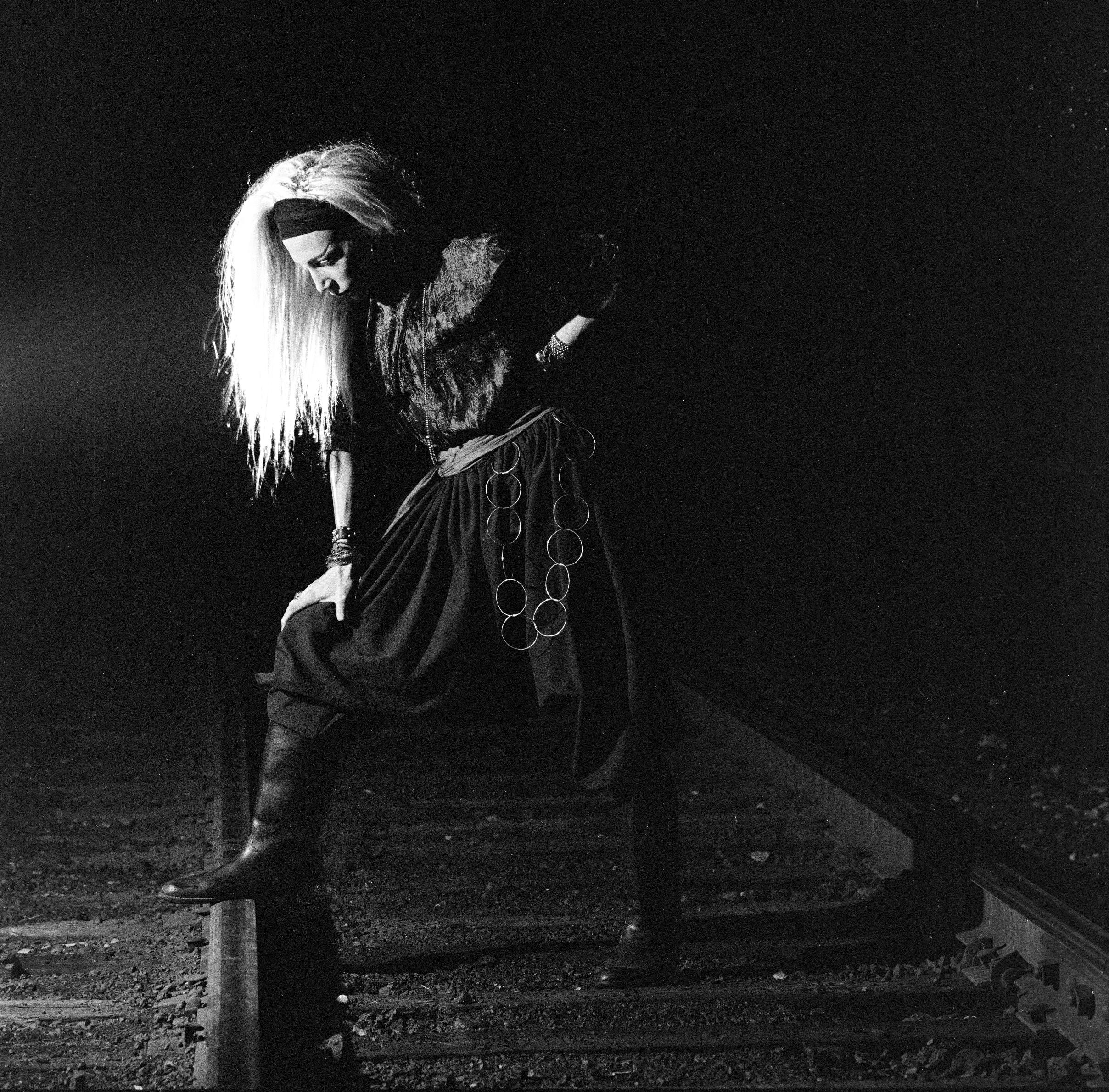
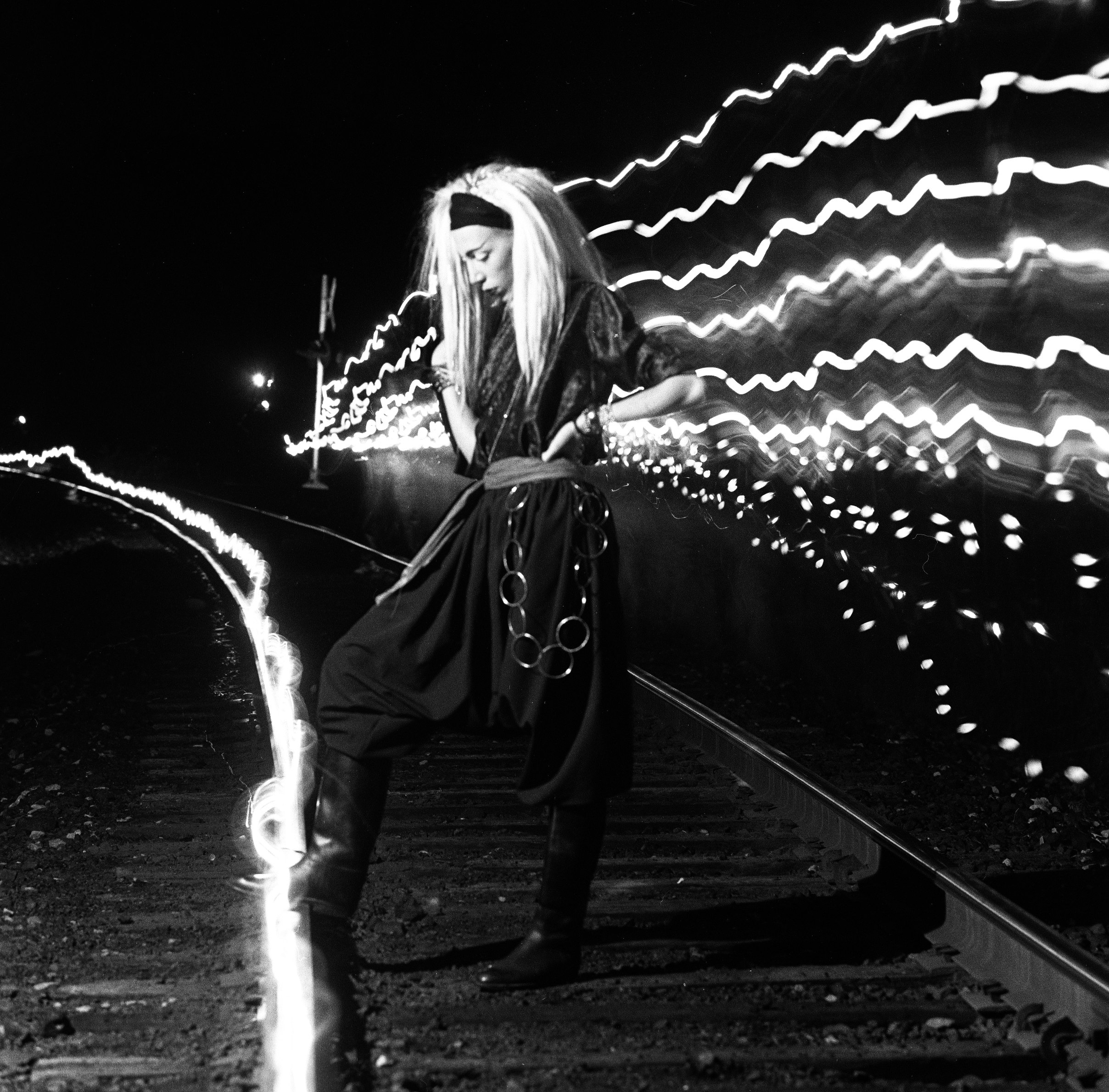 (Setup and testing with antenna terminals shorted: lamps not responsive to recieved signal.)
(Setup and testing with antenna terminals shorted: lamps not responsive to recieved signal.)
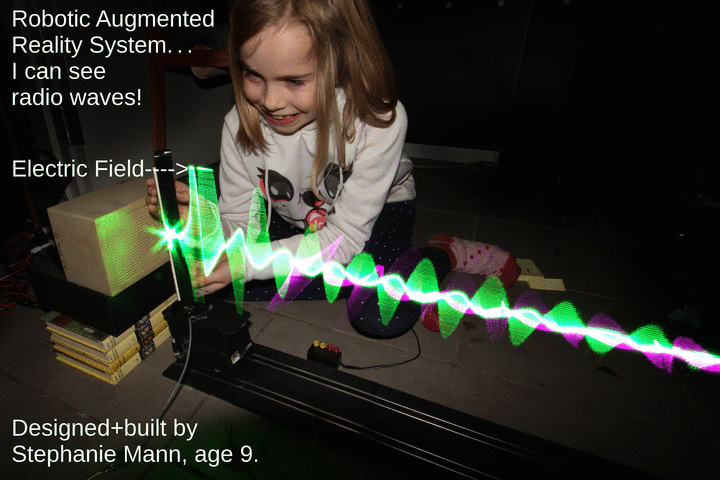
Stephanie Mann, age 9, using car racetrack in a similar way to her father's
railway guide...
Examples
Physical AR:
ARbotics allows us to sculpt the world, e.g. mechanized cutting through snow
to make snow sculptures as physical instantiations of phenomenological
augmented reality:
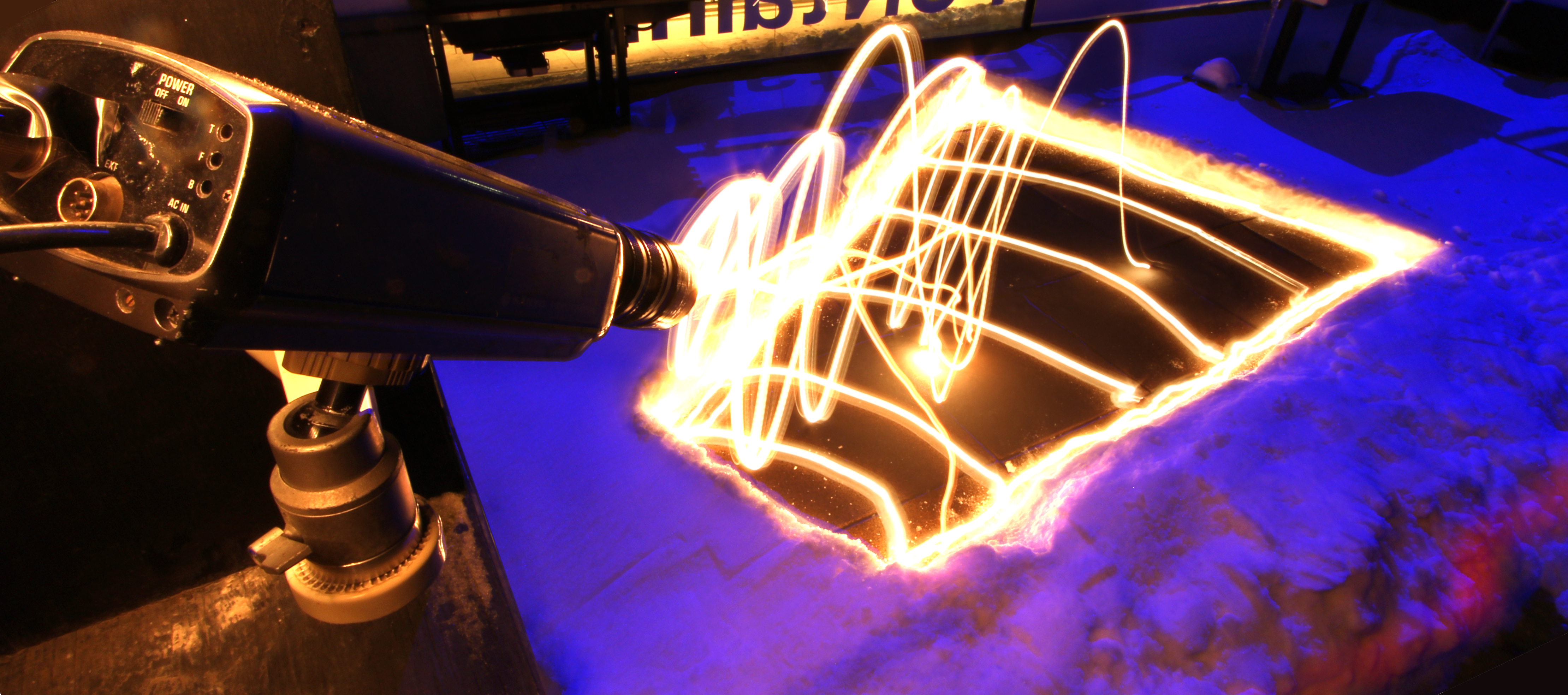
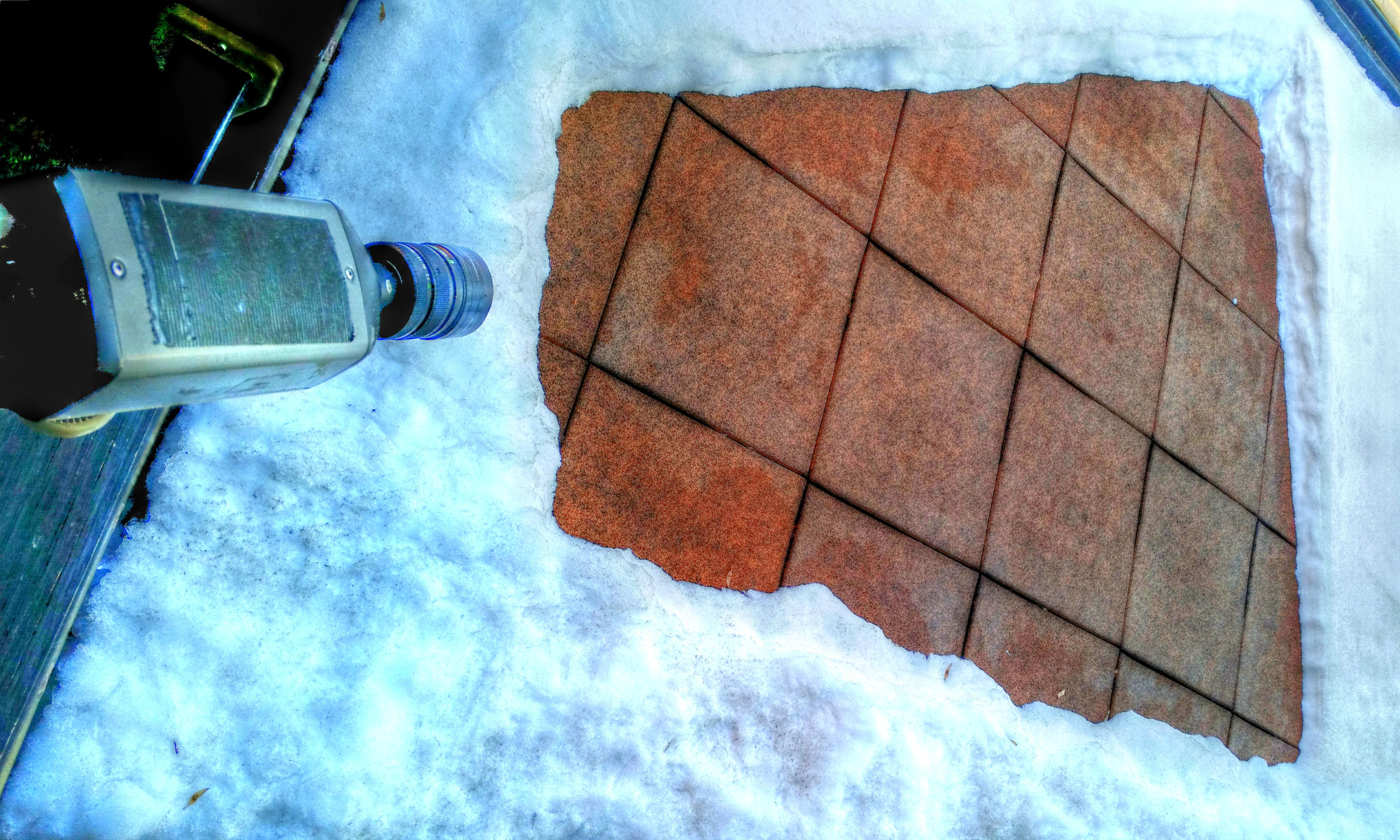
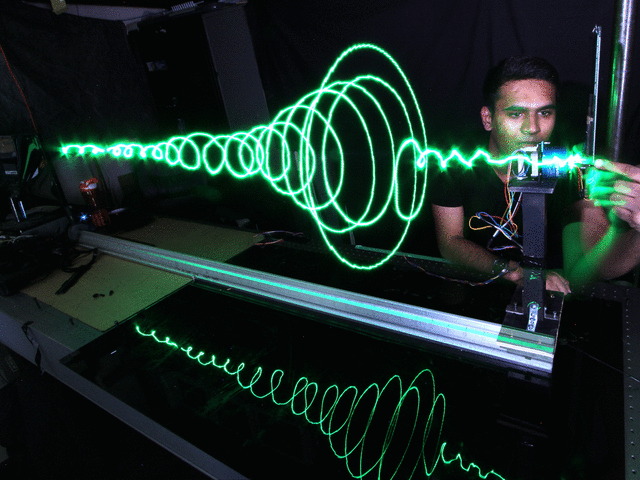 1280x960,
320x240
1280x960,
320x240
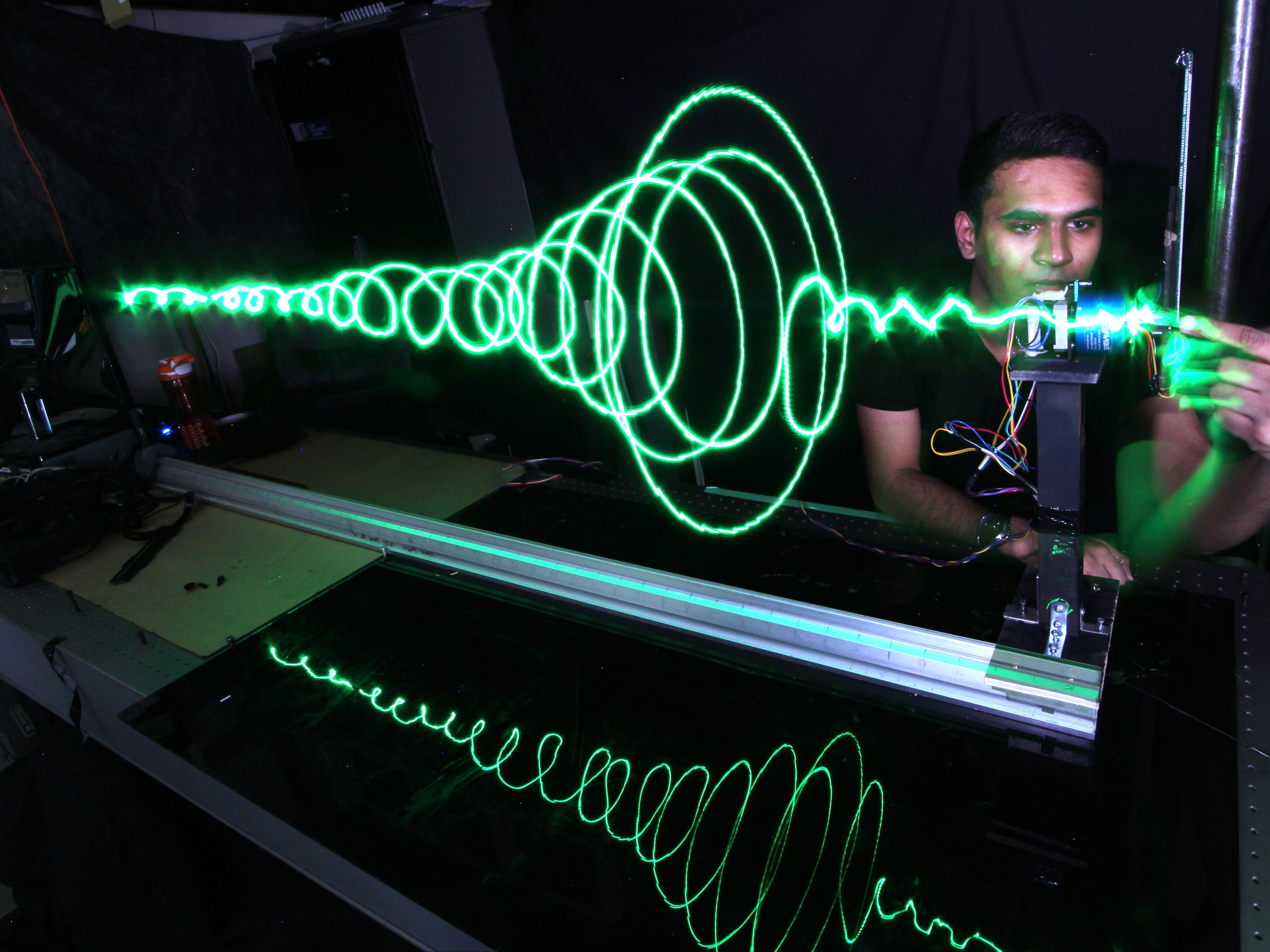 (frame 1)
(frame 1)
 (frame1)
(frame1)
frame1
frame2
frame3
frame4
frame5
Sarang, Adnan, and Nitin, are working on using the Chirplet Transform to represent gravitational waves; you can clearly see that the signal here takes the form of a chirplet. In the same way that a wavelet is a piece of a wave, a chirplet is a piece of a chirp, i.e. a localized (windowed) chirp.
The above visualization is based on data from the LIGO observatory in Livingston, Louisiana.
